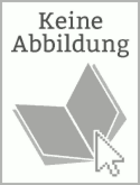-
Zusatztext
-
InhaltsangabePreface QUANTITATIVE CHARACTERIZATION OF AFFINITY PROPERTIES OF IMMOBILIZED RECEPTORS Introduction Measurements Under Equilibrium Conditions Kinetic Measurements Analysis of Temperature Dependencies Experimental Techniques SELECTIVITY OF CHEMICAL RECEPTORS Introduction Some General Considerations on Selectivity Correlation Between Selectivity and Affinity Crown Ether and Cryptand Complexes: Hole Size Fitting and Other Effects Recogniction of Transition and Heavy Metal Ions Recognition via Ion Pairing Hydrogen Bonded Complexes and Solvent Effects Lewis Acid Receptors Complexes with Stacking and van der Waals Interactions Multifunctional Receptors for Recognition of Complex Target Molecules Conclusions COMBINATORIAL DEVELOPMENT OF SENSING MATERIALS Introduction General Principles of Combinatorial Materials Screening Opportunities for Sensing Materials Designs of Combinatorial Libraries of Sensing Materials Discovery and Optimization of Sensing Materials Using Discrete Arrays Optimization of Sensing Materials Using Gradient Arrays Emerging Wireless Technologies for Combinatorial Screening of Sensing Materials Summary and Outlook FLUORESCENT CYCLODEXTRINS AS CHEMOSENSORS FOR MOLECULE DETECTION IN WATER Introduction PyreneAppended Cyclodextrins FluorophoreAmino AcidCD Triad Systems Molecular Recognition by Regioisomers of Dansyl-Appended CDs TurnOn Fluorescent Chemosensors Effect of Protein Environment on Molecule Sensing CDPeptide Conjugates as Chemosensors Immobilized Fluorescent CD on a Cellulose Membrane Conclusion CYCLOPEPTIDE DERIVED SYNTHETIC RECEPTORS Introduction Receptors for Cations Receptors for Ion Pairs Receptors for Anions Receptors for Neutral Substrates Conclusion BONORIC ACIDBASED RECEPTORS AND CHEMOSENSORS Introduction De Novo Design Combinatorial Approaches Template Directed Synthesis ARTIFICIAL RECEPTOR COMPOUNDS FOR CHIRAL RECOGNITION Introduction Cyclodextrins Crown Ethers Calixarenes Calix[4]resorcinarenes Miscellaneous Receptor Compounds MetalContaining Receptor Compounds FULLERENE RECEPTORS BASED ON CALIXARENE DERIVATIVES Introduction Calixarenes Solid State Complexation by Calixarenes Comlexation in Solution Calixarenes as Molecular Scaffolds Outlook GUANIDINIUM BASED ANION RECEPTORS Introduction Instructive Historical Examples Recent Advances in Inorganic Anion Recognition Organic and Biological Phosphates Polycarboxylate Binding Amino Acid Recognition Dipeptides as Substrate Polypeptide Recognition Conclusion ARTIFICIAL RECEPTORS BASED ON SPREADER-BAR SYSTEMS POTENTIAL OF APTAMERS AS ARTIFICIAL RECEPTORS IN CHEMICAL SENSORS Introduction Generation and Synthesis of Aptamers Aptamer Arrays Techniques for Readout of Ligand Binding to the Aptamer Outlook/Summary CONDUCTING POLYMERS AS ARTIFICIAL RECEPTORS IN CHEMICAL SENSORS Introduction Transducers for Artificial Receptors Based on Conducting Polymers Intrinsic Sensitivity of Conducting Polymers Conducting Polymers Modified with Receptor Groups Conclusion MOLECULARLY IMPRINTED POLYMERS AS ARTIFICIAL RECEPTORS Introduction Fundamentals of Molecular Imprinting Polymer Formats and Polymerization Methods for MIPs Evaluation of MIP Performance - Imprinting Efficiency MIPs Mimicking Natural Receptors Conclusions and Outlook QUANTITATIVE AFFINITY DATA ON SELECTED ARTIFICIAL RECEPTORS Structures of Receptors
-
-
Kurztext
-
The selective binding of a particular compound to another is a lockand-key principle omnipresent in living organisms and an indispensable means of information transport and triggering responses. Derived from the biological archetype, synthetic receptors imitate nature`s idea for tailormade functionalities such as detection (sensing), signaling, and triggering. This book provides systematically organized information on all three important aspects of artifi cial receptor design as well as the knowledge on an exceptionally hot and multidisciplinary field of research. Strong emphasis is placed on the methodology for discovering artificial receptors, with both defi nitions for chemosensitivity as well as experimental setups supplied. Numerous classes of artificial receptors are covered, as well as their synthesis, immobilization on surfaces, and quantitative data on their properties. The fi nal chapter with all relevant quantitative data on artifi cial receptors complete this wellrounded book.
-
-
Autorenportrait
- Vladimir M. Mirsky is Professor at Lausitz University of Applied Sciences, Senftenberg, Germany. He graduated from Moscow Medical University in Biophysics and went on to study Physical Chemistry and Electrochemistry at the Frumkin Institute of Electrochemistry of the Soviet Academy of Sciences, obtaining there his PhD in 1986. He subsequently held an Alexander-von-Humboldt Research Fellowship and a research position at the CNRS Centre of Molecular Biology in France prior to joining the Institute of Analytical Chemistry, Chemical Sensors and Biosensors at Regensburg University in 1995. After habilitation he became Professor of Nanobiotechnology and moved to Lausitz. He is editor of two recent books, "Ultrathin Electrochemical Chemo- and Biosensors" and "Combinatorial Methods for Chemical and Biological Sensors". His work has led to about 20 patents and patent applications as well as 120 peer-reviewed scientifi c papers. Anatoly K. Yatsimirsky is Professor of Chemistry at the National Autonomous University of Mexico in Mexico City. He obtained his PhD and Dr. Sc. degrees from Moscow Lomonosov State University, where he was Professor prior to his move to Mexico in 1992. He spent Visiting Scholar/Professor stays at Milan University, Italy, in 1980/81 and at the University of California at Santa Barbara in 1998/99. His research is focused on physical organic chemistry and metal complex catalysis and he is the author of 160 peer-reviewed scientifi c publications including a monograph "Principles and Methods in Supramolecular Chemistry" by John Wiley & Sons and further book contributions.
Detailansicht

Artificial Receptors for Chemical Sensors
ISBN/EAN: 9783527323579
Umbreit-Nr.: 1158713
Sprache:
Englisch
Umfang: XVI, 470 S., 169 s/w Illustr., 33 farbige Illustr.
Format in cm:
Einband:
gebundenes Buch
Erschienen am 15.12.2010
Auflage: 1/2010

